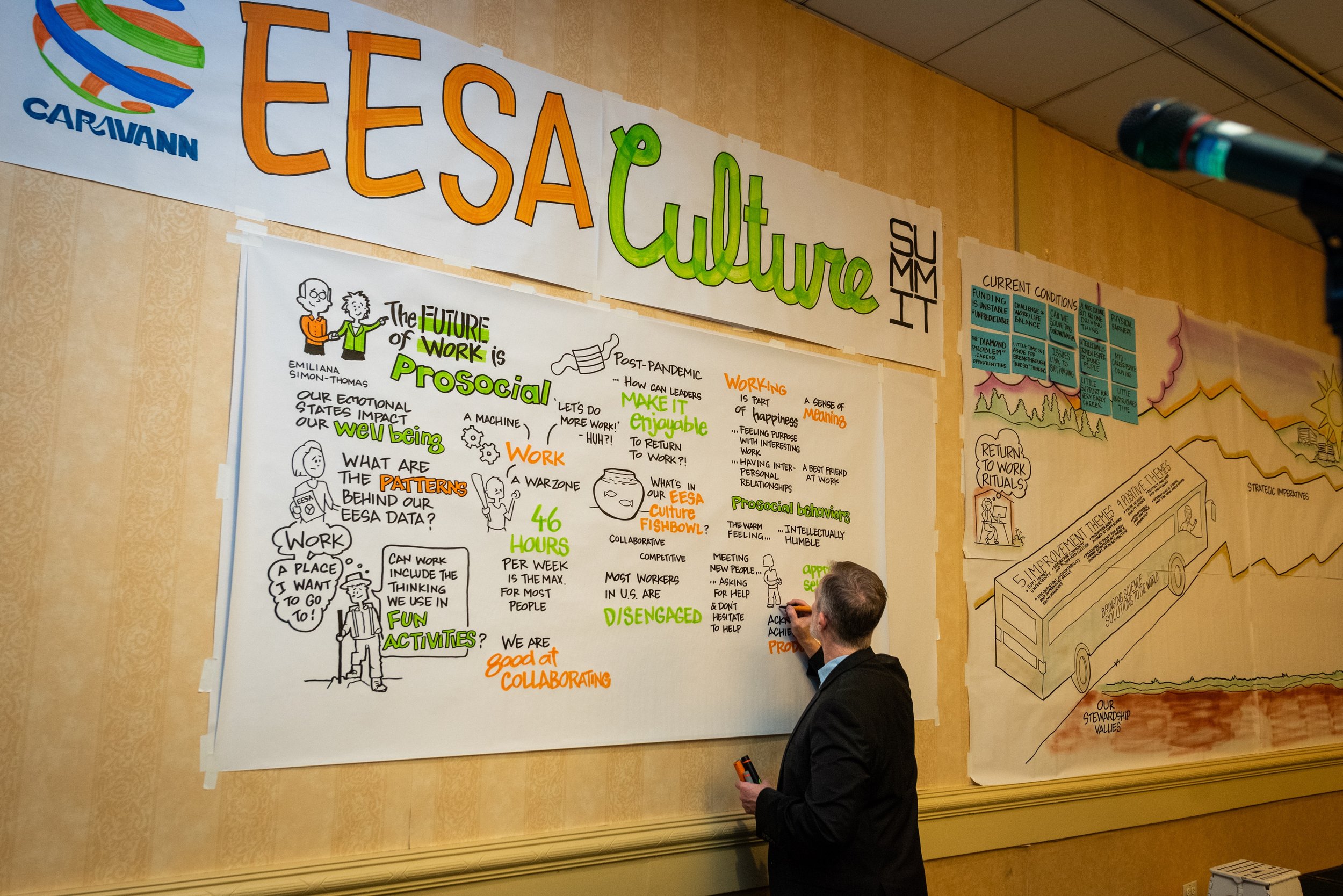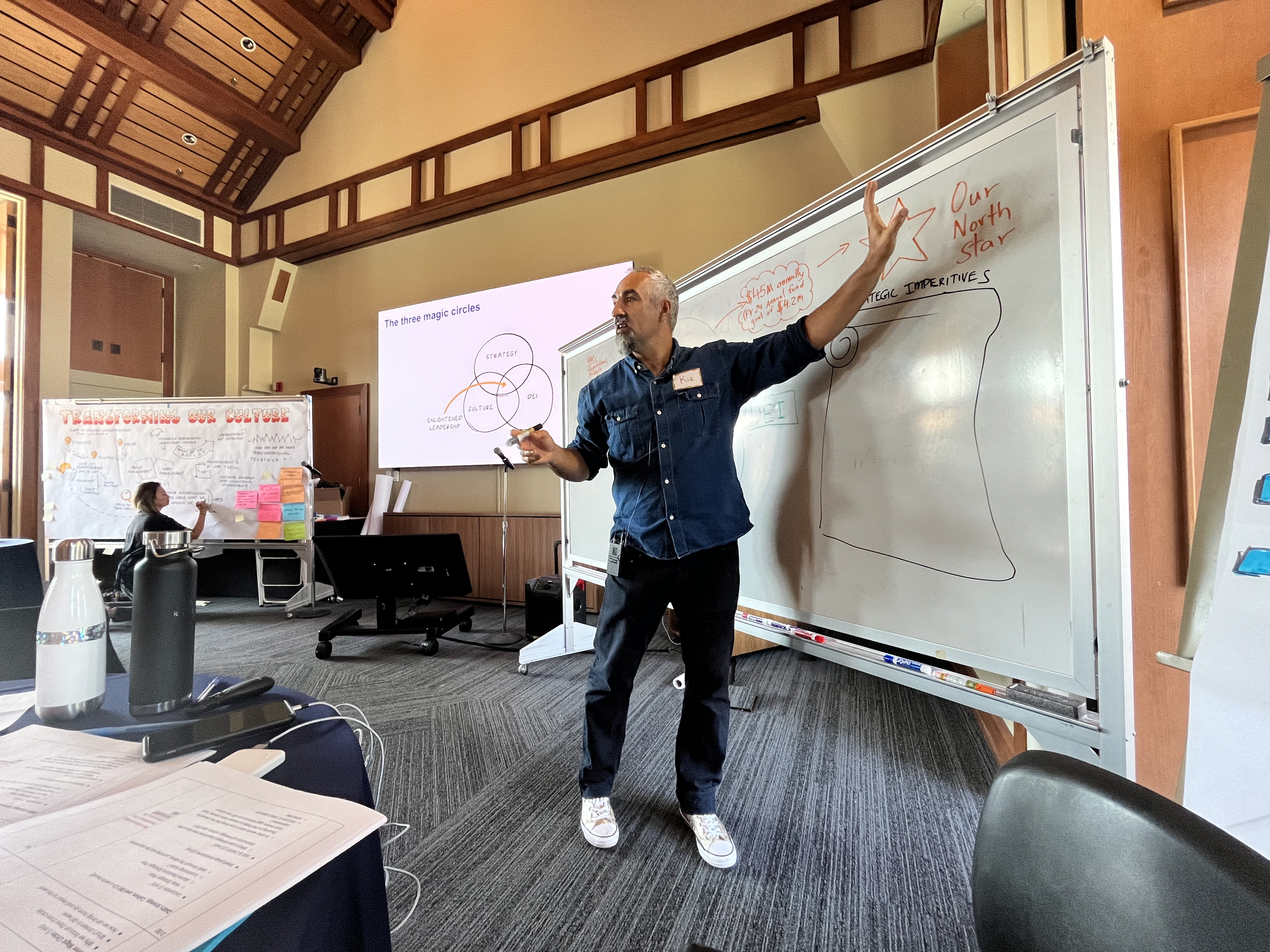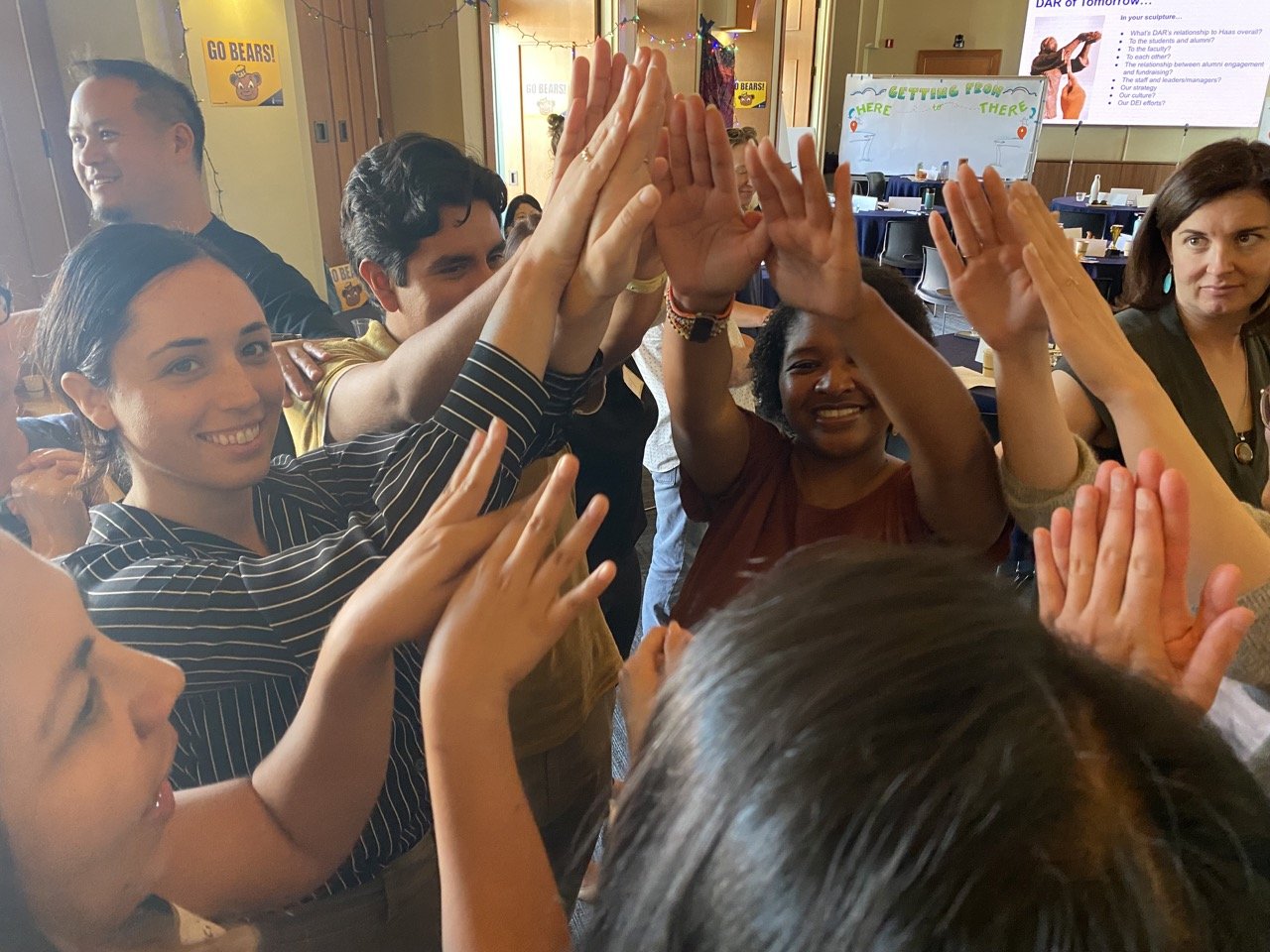Case Study
Background
A Climate-focused National Laboratory team of 200 scientists seeks to build its culture and come back to the office in a way that works for everyone. After the COVID pandemic, organizational leaders saw that early career scientists were not getting mentored because most people were still working from home. They wanted to build their culture but also have strategic conversations about their basic business model. While they had done surveys about returning to work, they didn’t know how to do that in a way that actually builds the culture and doesn’t risk alienating key talent.
Our Approach
Assessment:
We carried out in-depth culture assessment by doing focus groups and interviews with 49 people with questions about the current culture, ideal culture, and return to work desires.
We also held a series of 5 strategy meetings with the leadership to map the current strengths and challenges and define a strategy for success.
Alignment:
During the EESA Culture Summit, 200 scientists and staff came together to hear the results of the culture assessment, and co-create a Journey Map that aligns strategy, culture, and DEIB.
Activation:
We convened a group of Culture Champions who crafted “We Statements” that describe their desired culture
The team also produced a series of “Return to Work Rituals” that improved the experience of coming back to the office with coordinated scheduling, “big question collaboration” days, and connection opportunities.
OUTCOME
The team emerged with a clear Journey Map for the next two years that aligns strategy with the key enablers of culture and DEIB, and the organization reports improved employee engagement, a more positive culture, and clarity about how to succeed together.






Our Client’s Journey
We co-create the journey with our clients by starting with strategy, then thinking of culture as the way to activate the strategy, all with a lens to DEIB. Since change begins from within and usually with the top-down, we focus on leadership capabilities to model what is needed to set the tone for the rest of the organization.
CLIENT TESTIMONIALS
“Joy and trust increased immensely from my perspective. The exercises were unique, mostly simple to follow and offered a wide variety of approaches to keep them interesting. Having this fun shared experiences strengthens bonds and trust. It really was the best I’ve experienced.”
“The energy the Caravann team brought to the room was unparalleled to any retreat I’ve been to before. There was clear and palpable intention placed in every activity. My favorite activity was the “day in my life” drawing. ”
“I’ve participated in several culture-building and defining work with other organizations - working with Caravann was the first time I didn’t leave feeling like I had to change who I am to fit in with the teaching and learning methods. I felt welcome at every step, which I greatly appreciate.”
“The Caravann team leads with empathy, humility, and compassion when helping teams work through difficult conversations. Their methods and trainings are approachable, and created a safe environment for our team to stop, assess, and start working towards a new shared goal. ”





